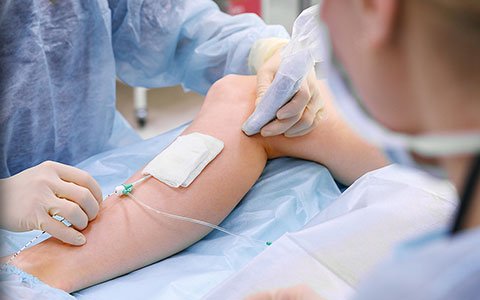Left Neck Pain, Rib Pain, Chest Gas Relief
Left Neck Pain, Rib Pain, Chest Gas Relief
Blog Article
Experiencing pain in various parts of the body can be alarming, especially when it involves sensitive areas such as the neck, ribs, and chest. Specific issues like neck pain left side, ribs right-side pain, and gas pain in the chest can cause discomfort and disrupt daily life. In this detailed guide, we will explore the causes, symptoms, and solutions for these conditions while keeping a focus on holistic health and lifestyle adjustments.

What Causes Neck Pain on the Left Side?
Left-side neck pain is a common complaint that can arise from several factors, including:
Muscle Strain: Poor posture, prolonged screen time, or sleeping in an awkward position can strain the muscles in your neck.
Cervical Disc Issues: Degenerative disc disease or a herniated disc can result in localized or radiating pain.
Tension or Stress: Emotional stress can lead to muscle tension, particularly in the neck area.
Injuries: Whiplash from car accidents or sports-related injuries may cause neck pain.
Underlying Conditions: Conditions like arthritis, cervical spondylosis, or even fibromyalgia may contribute to persistent pain.
Symptoms of Left-Side Neck Pain
The symptoms often include:
A dull ache or sharp pain on the left side of the neck.
Stiffness and difficulty turning the head.
Tingling or numbness radiating to the shoulder or arm.
Headaches or dizziness in some cases.
How to Address Neck Pain on the Left Side
Home Remedies
Hot or Cold Therapy: Apply an ice pack for 15-20 minutes to reduce inflammation, or use a heating pad to relax muscles.
Neck Exercises: Gentle stretching and strengthening exercises can improve mobility and reduce stiffness.
Posture Correction: Maintain an ergonomic workstation and avoid prolonged screen time.
Medical Treatments
Physical Therapy: A physical therapist can create a customized exercise plan.
Pain Relief Medication: Over-the-counter medications like ibuprofen or acetaminophen may help alleviate symptoms.
Medical Evaluation: Persistent or worsening pain may require imaging tests like an MRI or X-ray to diagnose the underlying issue.
Understanding Ribs Right-Side Pain
ribs right side paincan result from various causes, including:
Common Causes
Muscle Strain: Overexertion during exercise or heavy lifting can strain the intercostal muscles.
Injury or Trauma: A fall, accident, or direct blow can lead to bruised or fractured ribs.
Costochondritis: Inflammation of the cartilage connecting the ribs to the breastbone can cause localized pain.
Liver or Gallbladder Issues: Conditions such as gallstones or liver inflammation may manifest as rib pain.
Respiratory Conditions: Pneumonia, pleuritis, or other lung infections can contribute to discomfort on the right side of the ribs.
Symptoms to Watch For
Sharp or aching pain localized to the right side of the ribs.
Pain that worsens with deep breathing, coughing, or movement.
Swelling or tenderness in the affected area.
Accompanying symptoms like fever or difficulty breathing.
Solutions for Right-Side Rib Pain
Self-Care Tips
Rest and Avoid Strain: Refrain from activities that exacerbate the pain.
Pain Management: Use ice packs or heat pads to reduce swelling and discomfort.
Breathing Exercises: Controlled deep breathing can alleviate stiffness and improve lung function.
Medical Intervention
Diagnostic Tests: Ultrasounds, CT scans, or X-rays may be necessary to identify internal issues.
Medications: Anti-inflammatory drugs or antibiotics (if an infection is present) may be prescribed.
Surgical Options: Severe trauma or gallbladder issues might require surgical intervention.
Decoding Gas Pain in the Chest
Gas pain in the chest often feels like sharp or squeezing discomfort and is typically mistaken for heart-related issues. It occurs when excess gas builds up in the stomach or intestines.
Causes of Gas Pain in the Chest
Overeating: Consuming large meals can trap air in the digestive system.
Swallowing Air: Eating too quickly or chewing gum can lead to air ingestion.
Acid Reflux: Gastroesophageal reflux disease (GERD) often causes chest discomfort due to trapped gas.
Food Intolerances: Lactose or gluten intolerance can contribute to bloating and chest pain.
Symptoms
A feeling of fullness or tightness in the chest.
Belching or passing gas for relief.
Bloating or abdominal discomfort.
Temporary, non-radiating pain.
How to Alleviate Gas Pain in the Chest
Lifestyle Adjustments
Dietary Changes: Avoid gas-inducing foods such as beans, carbonated beverages, and spicy meals.
Portion Control: Eat smaller meals and chew food slowly to prevent air ingestion.
Hydration: Drink plenty of water to aid digestion.
Exercise: Regular movement helps gas pass through the digestive system.
Remedies
Over-the-Counter Medications: Antacids or simethicone can reduce gas buildup.
Natural Remedies: Ginger tea or peppermint oil may help soothe the digestive tract.
When to Seek Medical Help
While most cases of neck pain on the left side, ribs right-side pain, and gas pain in chest are manageable with home care, it’s crucial to recognize red flags that require professional attention:
Persistent or severe pain that doesn’t improve with rest.
Chest pain accompanied by shortness of breath, dizziness, or nausea.
Radiating pain to the arms, back, or jaw, which could indicate a cardiac issue.
High fever, swelling, or visible deformity in the rib area.
Preventing Recurrences
Maintain a Healthy Lifestyle: Regular exercise, a balanced diet, and adequate hydration can prevent gas pain and muscle strain.
Ergonomic Practices: Set up a workstation that supports good posture to reduce neck strain.
Regular Health Checkups: Early diagnosis and treatment of underlying conditions can prevent complications.
Stress Management: Practice relaxation techniques like yoga or meditation to ease muscle tension.
Final Thoughts
Understanding the interconnectedness of symptoms such as neck pain on the left side, ribs right-side pain, and gas pain in the chest is essential for effective management and prevention. By adopting a proactive approach to health through lifestyle changes and timely medical interventions, you can significantly improve your quality of life. Remember to listen to your body and consult a healthcare provider when in doubt to ensure your well-being. Report this page